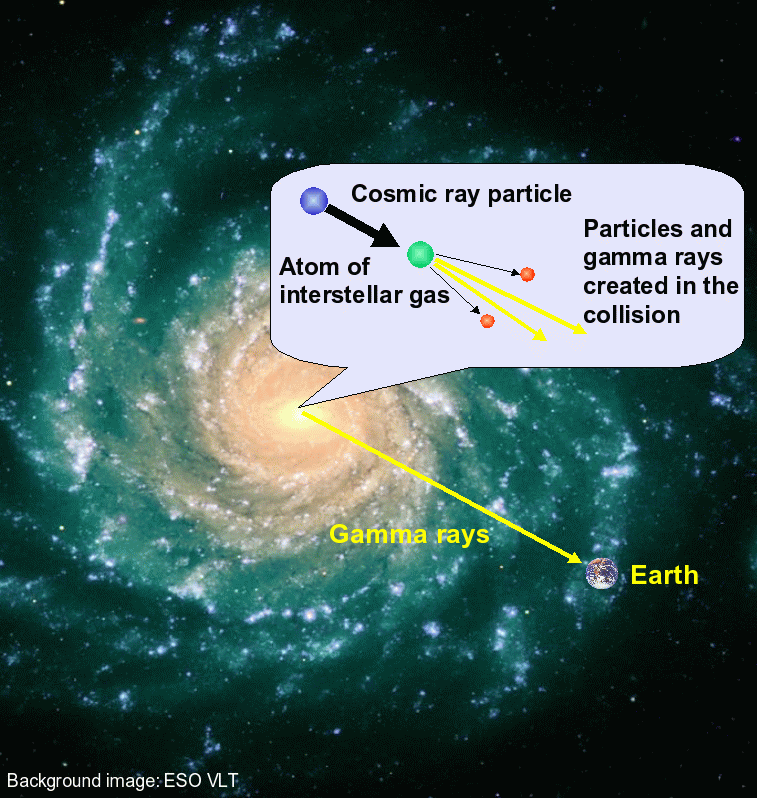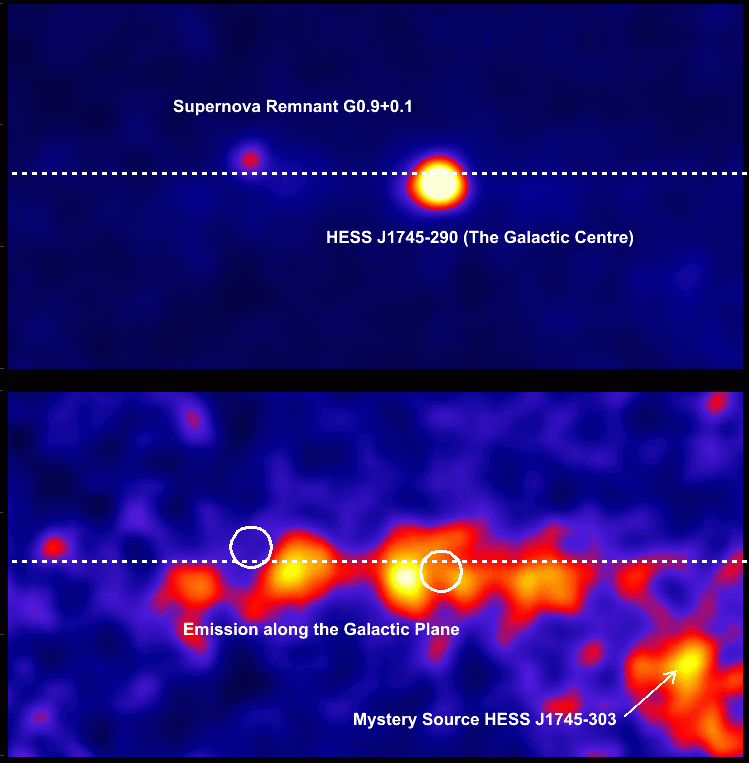The discovery: In a recent publication in Nature magazine, the international H.E.S.S. collaboration reported the discovery of gamma-ray emission from a complex of gas clouds near the centre of our own Milky-Way Galaxy. These giant clouds of hydrogen gas encompass an amount of gas equivalent to 50 million times the mass of the sun. With the highly sensitive H.E.S.S. gamma-ray telescopes, it is possible for the first time to show that these clouds are glowing in very-high-energy gamma rays.
The issue: One key issue in our understanding of cosmic rays is their distribution in space. Do they permeate the entire Galaxy uniformly, or do their density and distribution in energy vary depending on one's location in the Galaxy (for example due to the proximity of cosmic particle accelerators)? We can only take direct measurements of cosmic rays within our solar system, located about 25,000 light years from the centre of the Galaxy. However, a subterfuge allows astrophysicists to investigate cosmic rays elsewhere in the Galaxy: when a cosmic-ray particle collides with an interstellar gas particle, gamma rays are produced.
The gamma-ray / cosmic-ray link: The central part of our Galaxy is a complex zoo, containing examples of every type of exotic object known to astronomers, such as the remnants of supernova explosions and a super-massive black hole. It also contains huge quantities of interstellar gas, which tends to clump in clouds. If gamma rays are detected from the direction of such a gas cloud, scientists can infer the density of cosmic rays at the location of the cloud. The intensity and distribution in energy of these gamma rays reflects that of the cosmic rays.
At low energies, around 100 Million electronVolts (man-made accelerators reach energies up to 1,000,000 Million electronVolts), this technique has been used by the EGRET satellite to map cosmic rays in our Galaxy. At really high energies - the true domain of cosmic-ray accelerators - no instrument was so far sensitive enough to "see" interstellar gas clouds shining in very-high-energy gamma rays. H.E.S.S. has for the first time demonstrated the presence of cosmic rays in this central region of our Galaxy.
The surprise: The H.E.S.S. data show that the density of cosmic rays exceeds that in the solar neighbourhood by a significant factor. Interestingly, this difference increases as we go up in energy, which implies that the cosmic rays have been recently accelerated. So, these data hint that the clouds are illuminated by a nearby cosmic-ray accelerator, which was active over the last ten thousand years. Candidates for such accelerators are a gigantic stellar explosion which apparently went off near the heart of our Galaxy in "recent" history (Chandra press release ), another possible acceleration site is the super-massive black hole at the centre of the Galaxy. Jim Hinton, one of the scientists involved in the discovery, concludes "This is only the first step. We are of course continuing to point our telescopes at the centre of the Galaxy, and will work hard to pinpoint the exact acceleration site - I'm sure that there are further exciting discoveries to come"


